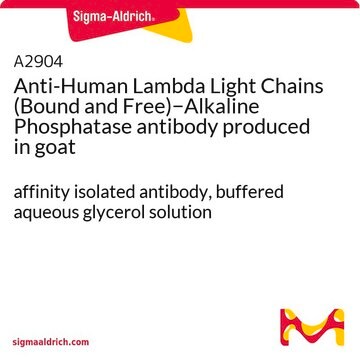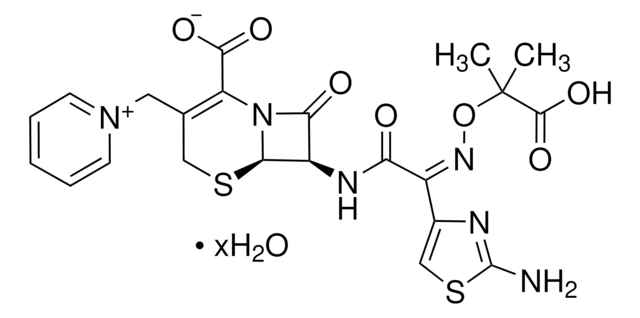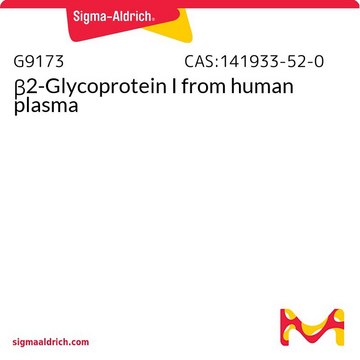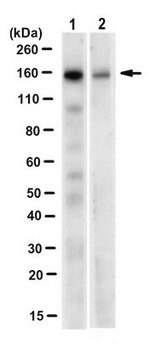C0739
Anti-phospho-Cortactin (pTyr421) antibody produced in rabbit
affinity isolated antibody, buffered aqueous glycerol solution
Sign Into View Organizational & Contract Pricing
All Photos(1)
About This Item
conjugate:
unconjugated
application:
ICC
WB
WB
clone:
polyclonal
species reactivity:
mouse
citations:
12
technique(s):
immunocytochemistry: suitable
western blot: 1:1,000
western blot: 1:1,000
Recommended Products
biological source
rabbit
Quality Level
conjugate
unconjugated
antibody form
affinity isolated antibody
antibody product type
primary antibodies
clone
polyclonal
form
buffered aqueous glycerol solution
mol wt
antigen 80-85 kDa
species reactivity
mouse
technique(s)
immunocytochemistry: suitable
western blot: 1:1,000
UniProt accession no.
shipped in
wet ice
storage temp.
−20°C
target post-translational modification
phosphorylation (pTyr421)
Gene Information
mouse ... Cttn(13043)
Related Categories
General description
Cortactin is encoded by the CTTN gene on chromosome 11 in humans. It is a cytoskeleton protein that facilitates assembly of cortical actin. It is expressed in most adherent cells and is a prominent substrate of protein-tyrosine kinase Src.
Immunogen
synthetic phosphopeptide derived from the region of mouse cortactin that is phosphorylated on tyrosine 421.
Application
Anti-phospho-Cortactin (pTyr421) antibody produced in rabbit is suitable for immunocytochemistry and western blotting at a working dilution of 1:1,000
Biochem/physiol Actions
Cortactin is activated by phosphorylation of tyrosine kinases or serine/threonine kinases. It plays an important role in promoting lamellipodia formation, invadopodia formation, cell migration, and endocytosis. Cortactin regulates the interactions between components of adherens-type junctions and helps in organizing the cytoskeleton, cell adhesion structures of epithelia and carcinoma cells. During apoptosis, the encoded protein is degraded in a caspase-dependent manner. It acts as a regulator in invasion and migration of tumor cells. The overexpression of cortactin causes osteosarcoma carcinogenesis and along with FAK increases the risk of oral premalignant lesions.
Physical form
Solution in Dulbecco′s phosphate buffered saline (without Mg2+ and Ca2+), pH 7.3 (+/- 0.1), 50% glycerol with 1.0 mg/mL bovine serum albumin (IgG and protease free) and 0.05% sodium azide.
Disclaimer
Unless otherwise stated in our catalog or other company documentation accompanying the product(s), our products are intended for research use only and are not to be used for any other purpose, which includes but is not limited to, unauthorized commercial uses, in vitro diagnostic uses, ex vivo or in vivo therapeutic uses or any type of consumption or application to humans or animals.
Not finding the right product?
Try our Product Selector Tool.
Storage Class
10 - Combustible liquids
wgk_germany
WGK 1
flash_point_f
Not applicable
flash_point_c
Not applicable
ppe
Eyeshields, Gloves, multi-purpose combination respirator cartridge (US)
Choose from one of the most recent versions:
Already Own This Product?
Find documentation for the products that you have recently purchased in the Document Library.
Tomer Meirson et al.
Oncotarget, 9(31), 22158-22183 (2018-05-19)
Metastatic dissemination of cancer cells from the primary tumor and their spread to distant sites in the body is the leading cause of mortality in breast cancer patients. While researchers have identified treatments that shrink or slow metastatic tumors, no
Maxwell D Weidmann et al.
Scientific reports, 6, 36142-36142 (2016-11-09)
Invadopodia, actin-based protrusions of invasive carcinoma cells that focally activate extracellular matrix-degrading proteases, are essential for the migration and intravasation of tumor cells during dissemination from the primary tumor. We have previously shown that cortactin phosphorylation at tyrosine residues, in
Lizandra Jimenez et al.
Archives of pathology & laboratory medicine, 139(11), 1349-1361 (2015-07-15)
Head and neck squamous cell carcinoma (HNSCC) is a highly invasive cancer with an association with locoregional recurrence and lymph node metastasis. We have previously reported that low microRNA-375 (miR-375) expression levels correlate with poor patient survival, increased locoregional recurrence
Aviv Bergman et al.
Cell adhesion & migration, 8(3), 273-279 (2014-04-10)
Invadopodia are dynamic protrusions in motile tumor cells whose function is to degrade extracellular matrix so that cells can enter into new environments. Invadopodia are specifically identified by microscopy as proteolytic invasive protrusions containing TKS5 and cortactin. The increasing complexity
Cortactin (CTTN) overexpression in osteosarcoma correlates with advanced stage and reduced survival.
Cecilia Folio et al.
Cancer biomarkers : section A of Disease markers, 10(1), 35-41 (2012-02-03)
The cortactin (CTTN) gene has been found, by transcriptomic profiling, to be overexpressed in pediatric osteosarcoma. The location of CTTN at 11q13 and the role of cortactin in cytoskeleton restructuring make CTTN of interest as a potential biomarker for osteosarcoma.
Our team of scientists has experience in all areas of research including Life Science, Material Science, Chemical Synthesis, Chromatography, Analytical and many others.
Contact Technical Service







